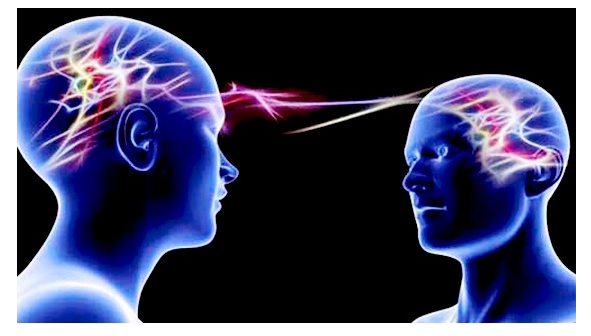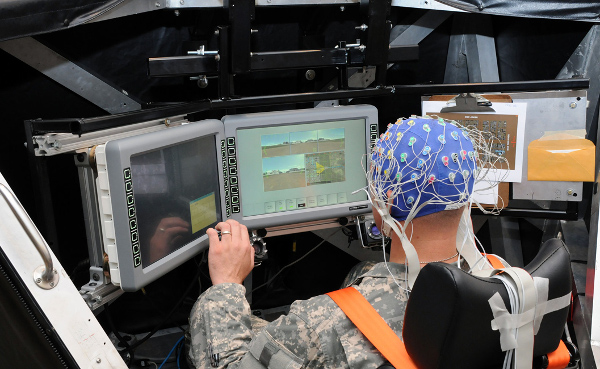
In several articles in our paranormal section we discussed the possibility of brain-to-brain communication, the so-called "reading of thoughts" even suggesting experiments and devices for this purpose.
In several articles in this section we explored the subject, indicating experiments that were published even in our book with editions in Brazil and the United States. We also explored the subject in our book Paranormal Electronics.

The possibility that brain-to-brain communication would be possible is not new and with advances in electronics it seems that it is becoming more and more a reality.
The use of technical resources would make the subject, hitherto approached in an exoteric way, with a mixture of crendices and superstitions, become part of science, with solid foundations which could be used in a new technology.
The idea that electrical signals are generated by our brain is not new. In 1924 the German psychiatrist Hans Berger first recorded electrical signals from a 17-year-old's brain during an operation, identifying what he later called alpha and beta waves (see our article PN008 - Alpha Rhythm and Biofeedback and the addendum in the end of the article).
In 1070 the Belgian engineer named Jacques Vidal suggested that electrical signals could be used for applications beyond medical use. He, in 1973, published a document in which he saw the future possibility of direct communication toward direct brain-computer communication.
Nowadays, the signals generated by brain activity are being researched in several sectors. For example, rapid peaks of these signals have been found to be associated with epilepsy, and certain waves may be generated by tumors or Alzheimer's.
We can go further with the practical applications which allow us to use the signals generated under certain conditions, mainly under the will control of the person to the control devices.
An example is the mechanism which allows a paralytic person to move with a bionic system (exo-skeleton) which was demonstrated just at the opening of the world cup in Brazil in 2014.
Robotic arms, mousers, and other features already exist, being totally controlled by the mind of people who have mobility limitations.
In April last year, for example, the first Brain Drone Race took place in Florida. In this competition, electrical signals generated by the competitors' brains were converted into commands to control the drones in the competition.
Within the current context of technology, one more term comes to add to the many with which we are still familiarizing ourselves as IoT, Wearable, Wi-Fi. It is the BCI - Brain Controlled Interface.

Some companies are already creating very interesting applications, such as the one which relates to the biometrics that Lenovo works on.
This is an authentication process where your password consists of a signal generated by your brain. The project is called "Brainwords".
The big problem of all that can lead us to a future BBC - Brain-to-Brain Communication or BCI - Brain Computer Interface, if we use the old traditional terms in decoding the signals that our Brain generates when we think.
Signals resulting from our brain activity, even when we are sleeping, are extremely complex. The rhythms or pulses that we pick up when we connect electrodes on an ECG are actually "noises" with extremely complex waveforms, where the possibility of decoding is almost impossible.
But as in science and technology there is no such thing as impossible, who knows if in the future we may gradually draw more complex information from these signals, such as its use in the conversion to words or images.
In addition, there is the problem of its reach, as they are extremely weak and have to overcome the skull barrier.
Current ideas for the future address the possibility of using interface helmets which would decode these signals and transmit them using longer-range signals.
In the same way, we could capture these signals by appropriate interfaces transmitting to the brain. Brain-to-brain communication would be complete.
For researchers, we suggest visiting the BCI Society Home Page on: http://bcisociety.org
And in the future (not too far away) we would have implanted in our brain a chip that would do that.
Of course, this new possibility of having our brains directly interfaced with the world puts our privacy and our security at risk, paving the way for illegal activity such as "will control" and everything else that puts us in danger. Laws will need to be reviewed so that all this protects us.
Quantum physics
We could not fail to comment in this context on the new findings of quantum physics that can lead to even more impactful technologies.
We have already dealt with in this section's articles on nanostructural discoveries in nerve cells which would be linked to unknown functions, such as contacts across other dimensions of the known universe.
Many researchers have found that these structures would explain paranormal phenomena such as clairvoyance and even telepathy. There is much to be discovered, but it would be possible in the unpredictable future to use such structures in brain-to-brain or brain-to-computer interfacing.
Brainwaves
Our nervous system operates from electrical impulses. Faint electric currents circulate through our nerves when they transmit impulses to the brain or the brain to effector organs. The complexity of the brain, and the lack of knowledge about its structure, prevent us from predicting exactly what frequencies or types of signals we can associate with each type of activity. Nevertheless, the researches reveal the existence of some well-defined rhythms, responsible for the appearance of electric currents of intensities and frequencies in certain bands and which can be associated with important biological phenomena. Below we give a description of these rhythms with their main characteristics.
ALPHA
This rhythm produces impulses of 10 to 100 uV of intensity in a range of frequencies ranging from 7 to 13 Hz. We can associate the alpha rhythm with states of tranquility, relaxation, weightlessness, etc.
THETA
This rhythm generates signals whose intensities are between 50 and 200 uV in a frequency range of 3 to 7 Hz. We can associate this rhythm with doubt, solving difficult problems, worrying about the future, daydreaming, etc.
DELTA
For this rhythm we have intensities of 10 to 50 uV in a range of very low frequencies, between 0.2 and 3 Hz. This rhythm is associated to the state of deep sleep, trance, etc.
BETA
The beta rhythm has signals whose intensities are in the range of 10 to 50 uV and frequencies between 13 and 28 Hz. We can associate this rhythm with a state of worry, fear, attention, tension, surprise, etc.
Signals of 0.01 to 0.1 uV have also been detected in a range of very high frequencies between 50 MHz and 1 GHz and which are poorly understood. These signals, through their frequency range can give rise to electromagnetic waves of greater penetration and that, with this, can be detected from some distance of the brain. The detection of low frequency signals is usually done by electrodes attached to the patient's head. The generated signals then pass through the liquid medium which exists between the brain itself and the electrodes, generating currents that are detected by the devices. Electroencephalographs (ECGs) are examples of devices that can be used to record low-frequency signals. See more articles on the subject in our section about Paranormal Electronics.



